Want to lose weight? From this article you will learn how.
Content
The vacation time is in full swing, and you did not have time to lose extra pounds before the beach vacation? Or maybe you have an important event where you need to look "one hundred percent"? Well, we suggest using a fashionable diet called “interval”, or “cyclical”.
Interval diet: principle, stages
Recently, it has acquired more and more supporters, as it provides:
- Cleansing the body.
- Weight loss.
- Reducing body volumes.
- Preservation of elasticity and skin elasticity.

This nutrition system is an alternation of monodieta (rice, protein and vegetable), each of which is aimed at performing a certain task in the process of weight loss:
- Rice (step 1) - contributes to cleansing the body.
- Protein (stage 2) - saturates the body with calories, while not allowing their transformation into fat deposits.
- Vegetable (step 3)-allows you to establish the work of the gastrointestinal tract after the previous stages.
The principle of nutrition with a cyclic diet is as follows:
- During each diet cycle, only a certain type of food is allowed to use.
- Be sure to comply with a strict sequence of stages of this diet.
- You determine the duration of each cycle yourself, listening to the requirements of your body. The main requirement - each stage cannot exceed more than 3 days.
- Diet can last 3 or 9 days. Not everyone can adhere to very strict restrictions in the diet. Such people are recommended to observe the restriction in food for three days.
- Based on the chosen duration of the diet, the interval of the transition from one type of product to another should be 24 hours (3-year) or 72 hours (9-type).

Features of this system:
- Exclude alcohol and sugar from the diet.
- Refuse salt, as it helps to keep moisture in the body. Replace it with spicy herbs to give taste to fresh dishes. If you still cannot eat unsalted products, use a small amount of dried sea cabbage or a drop of soy sauce.
- Be sure to follow the drinking regime (1.5-2 liters of liquid daily). In addition to non -carbonated water, the use of green or black tea, fruit juices without pulp, herbal infusions are allowed.
- Eat the daily rate of permitted products by dividing into 5-6 servings. The desired interval between meals is 2.5-3 hours.
- Eat in small portions, avoiding severity in the stomach. Eat the largest number of products for breakfast.
- The last meal should be no later than 20.00.
- Do not drink while eating. This can be done either half an hour before eating, or an hour after.
- During the diet, it is recommended to use mineral complexes and multivitamins.
You need to leave any diet correctly. In the first couple of days, gradually and in a small amount include the usual products in your diet. From alcohol, flour and sweet at this stage it is better to refrain.
Like any “express diet”, the interval power principle has a number of contraindications:
- Anemia.
- Diabetes.
- Lactation period.
- Pregnancy.
- Diseases of the liver, kidneys and other organs of the gastrointestinal tract.
- Children and adolescence.
- Cardly - vascular problems.
- Elderly age.
But even in cases where you are an absolutely healthy person, before the start of any strict diet, it is desirable to get a doctor’s consultation.
Stage 1 "Rice"
During rice cycle You must only use rice porridge. The absorbing characteristics of rice have long been known. He successfully removes salts from the joints, toxins, toxins and other harmful components. Due to this, the process of purification in our body occurs. Thus, he is preparing for the following stages of the diet.
Before cooking, it is important to properly prepare rice cereals:
- Rinse it very carefully to the transparent water.
- Pour cold water (1 part of the cereal 3 parts of water).
- So leave at least a couple of hours.
- Repeat the procedure for soaking three times, while changing the water. If there is no such possibility, you can soak the rice at night.
- Boil to the state of Aldende in unsalted water.
- It is more convenient to prepare the daily rice rate in the morning and divide it into 4-5 servings that you will eat during the day.

Power rules at the rice stage:
- The daily rate of rice cereal is 1 cup (200 g) in dry form.
- Rice can be white unnecessary, brown, black. Various varieties of cereals will bring variety into the meager diet of the first stage.
- The use of vegetable or animal fats is not allowed.
This cycle of the interval diet seems to be the most difficult, as it requires a person to abandon the usual products and sharply limits the daily diet. The use of one rice often leads to a feeling of hunger and weakness. Therefore, in the days of "rice" it is additionally allowed to use such products:
- Cucumbers, leaf greens (spinach, salad) - up to 300g.
- Up to 2 teaspoons of honey (preferably before lunch).
- Low -fat kefir or other sour -milk drink (200 ml).
- Soy sauce (to give the figure of taste).
It must be remembered that for a long time you can’t sit on a rice diet, since the indicated cereal promotes the washing of calcium salts and other beneficial substances from the body. In addition, this cereal is known for its fastening action, causing constipation. It is not recommended to perform more than three days with rice purification.
Stage 2 "Protein" (meat)
The basis of the diet on such days is the proteins of animal origin, which contribute to the saturation of the body, the formation of muscle mass, and renewal of cells. The essence meat monodite It consists in creating "carbohydrate starvation." To digest the animal protein, our body needs energy. And in the absence of carbohydrates, he will draw it due to fat deposits. Such a diet as if reprogramming metabolism to burn fat, and not muscle mass.
What animals are proteins, and in what quantities are allowed:
- Chicken meat without skin (preferably breast). This product contains few calories and is rich in B vitamins. However, if you do not like the chicken, it is allowed to replace it with a rabbit, veal, low -fat fish varieties. The daily norm is up to 900 g of the prepared product.
- Fatfound cottage cheese - 200 g.
- Egg proteins - up to 4 pcs.

Digging the animal protein takes a certain time, which provides a feeling of satiety. During the “meat” stage of the diet, we, as a rule, do not feel feelings of hunger and feel energetic and vigorous. In addition, a wide range of allowed products makes our diet more diverse.
How to eat protein food at the second stage of the diet:
- Bake or boil the meat. Fried food is prohibited.
- When cooking, do not use oil, panic and marinades.
- Avoid the use of meat and fish in one day.
- Include fiber or bran in the diet to avoid digestive problems.
- With a large amount of protein consumed, the load on the kidneys increases, as a result of which the body loses fluid. Therefore, do not forget to drink a lot of mineral water.
- At this stage, the body consumes a lot of calcium. Therefore, it is recommended to take it additionally.

On "meat" days, the diet is allowed the following products:
- Spices (without salt)
- Lemon juice
- Leaf greens (200-300 g)
- Kefir (up to 2 glasses)
Stage 3 "Vegetable"
After consuming only protein foods, it is necessary to establish a digestive process. This is facilitated by the use of vegetables in the final stage of the interval diet. They will saturate the body with vitamins, strengthen immunity, improve metabolism. In addition, a vegetable diet will help lower blood pressure and increase the number of natural antioxidants.
We list which vegetables are allowed to be used at this stage:
- Carrot
- Beets
- Spinach
- Tomatoes
- Green pea
- Zucchini
- Bulgarian pepper
- Cucumbers
- Onion
- Part beans
- Mushrooms
- All types of cabbage
- Eggplant
- Celery (root and stems)
The use is prohibited:
- Potatoes
- Sweet pumpkin

Features of this diet cycle:
- Eating vegetables is preferable in raw form.
- The daily norm is 1.5 kg of plant products.
- You can’t eat sauer, sharp or salty vegetables.
- It is allowed to boil products, steam or bake.
- Add a little vegetable oil to the dishes, as it helps the body absorb fat -soluble vitamins (daily norm - not more than 2 tbsp).
- Give preference not greenhouse, but seasonal vegetables (they contain more micronutrients). The use of exotic plant foods is not recommended.
- Keep in mind that the high content of fiber can cause problems with the intestines these days.
Additionally, in the diet of "vegetable" days you can include:
- Low -fat kefir - no more than 2 glasses
- Apple or grape vinegar
- Honey - 1 tbsp. l.
Pros and cons of the interval diet
Like any express diet, the interval has a number of advantages and disadvantages.
The undoubted advantages of the interval diet include:
- Quick result. During the week, weight loss can reach up to 6 kg.
- Frequent meals impede the appearance of a feeling of hunger.
- No need to calculate calories in food consumed.
- Such a diet is quite economical. After all, the products that make up its diet are available and cheap.

However, it is necessary to list the significant disadvantages of the interval diet:
- This nutrition system is quite stressful for the body. Therefore, nutritionists recommend sitting on such a diet no more than three times a year.
- The diet is quite scarce and monotonous.
- At all stages, food is not balanced.
- Weakness, dizziness, fatigue may appear.
- During a diet, and especially “rice” days, it is better to refrain from active physical exertion.
Kefir diet, as one of the types of interval diet
One of the options for the interval diet is the so -called kefir diet. It also consists of three stages. The essence comes down to the following: daily you use low -fat kefir in any quantity necessary for you, and eat products permitted for each cycle:
- In the first cycle - boiled rice (no more than 100 g of dry product).
- In the second cycle - white chicken (not more than 500 g).
- In the third cycle - green apples (up to 700 g).
Interval diet and interval starvation: is this the same thing?
Sometimes the term “interval diet” is mistakenly called the type of nutrition, in which a long period of time between meals is maintained. We are talking about interval starvation. His concept was developed by a fitness trainer from Canada Brad Pilon. This is called this EAT-Stop-EAT power system.

The principles of the EAT-Stop-EAT system:
- Eating is allowed to be familiar to you.
- Be sure to arrange a long break (about 16 hours) between evening and daytime meals. That is, you need to have breakfast at 9 am, have lunch and dinner at 17 o’clock and no longer eat until the next breakfast.
- If well -being (and willpower) allows you to refrain from lunch. Thus, starvation interval 16 hours a day.
- After a break, the basis of the first meal should be vegetables and meat - this is breakfast.
- During the days of increased physical activity, eating after training should be the most plentiful, and on calm days - eat more food in the first trick.


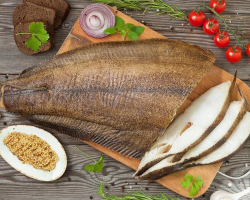

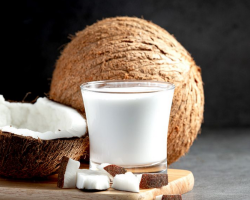
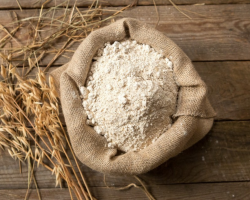
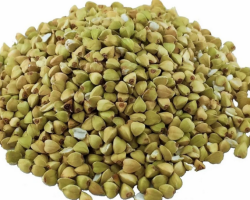
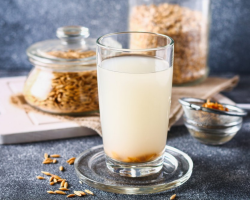
Wow, how confused. You need to do everything easier to exclude carbohydrates, eat protein foods, go to the hall and, if desired, you can buy sports nutrition, but this is together with physical exertion. I even buy protein bars for a snack, Protein Bar from the Sportexpert line, after training what you need.